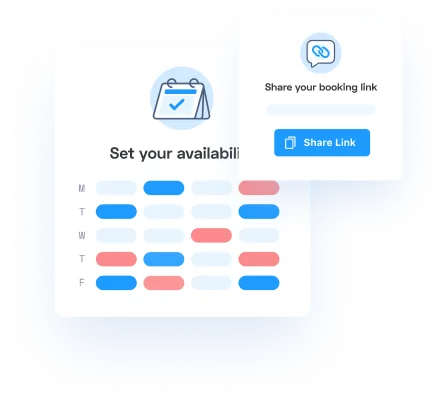I have a love-hate relationship with cold outreach emails. I’m sure I’m not the only one out there.
On the one hand, it’s all sunshine and rainbows when I get replies and interested prospects. But there’s a downside, paved by the many unopened emails and demoralizing low response rates.
At least, that’s if you don’t know what you’re doing.
And since I’ve done this gig for quite some time, I’m no longer a stranger to the various email writing strategies that have yielded me the best conversion rates.
So whether you’ve been building your email list and want to start a campaign or pitching for guest posts — if you want to learn how to write outreach emails that have personally helped me get conversion rates of up to 43%, then keep on reading.
Why email outreach is still one of the best outreach strategies
Email outreach is a smart way to connect with other professionals in your field and discover potential clients. First of all, it’s not as intrusive as a sales call and gives the prospect time to pay attention when they have the time to do it, on their terms.
It also gives the sender the opportunity to express their request creatively through writing and visual aid. Generally, email marketing and outreach have proven themselves to be the most successful channels of promotion, for landing opportunities like guest posts, link building using infographics, and ways of connecting with other people.
It also delivers the highest ROI for marketers.
How to write outreach emails that will actually convert
Just as with any marketing strategy, the way you execute your outreach plan depends on who you’re targeting and the industry they work in.
Improve your email prospecting strategy by personalizing your messages according to the needs and interests of your recipient. You could also write compelling emails that grab your audience’s attention with the help of AI content personalization tools. An AI email generator can help you draft initial templates and overcome writer’s block, but remember to always personalize the output to reflect genuine interest in your prospect. With audio to text transcription, you can easily convert your audio messages into readable text, which can also improve your audience’s understanding of your message.
A simple example is the open rate comparison between guest post requests and sales pitches about a certain product. As mentioned before, I have received up to 43% conversion rates from my outreach emails, but it’s important to note that that was for a guest post or link building campaign.
While it is still a pretty big deal to get those numbers — it is certainly easier when you are offering something upfront. People like to be on the receiving end of a relationship, so an outreach email that offers them something instead of trying to sell is likely to be more successful.
Still, that doesn’t mean that you won’t get any responses trying to sell your product through cold emails. It just means that you’ll have to be a bit creative doing it and be more realistic in your actual conversion rates. Email tracking is a valuable feature provided by many email marketing platforms that can enhance your outreach efforts by providing insights into recipient engagement.
Additionally, it is important to track the responses in order to understand how effective your outreach is. Email tracking tools can help you to find out when a recipient opens your email and prepare a perfectly timed follow-up.
So if you want to know the key factors in email conversion, here’s exactly what it boils down to:
- Good research
- Good email
- Luck
Yes, I said it. Luck. Know that even if you can have done all the research, have the right decision-maker, write a bloody great email with a great value proposition — you still won’t ever convert a lead.
And sometimes it’s bad timing — the solution that you offer may already be in the works of being solved. Or the prospect is tied to many projects and doesn’t have the time to fit a new one.
So while point 3 is something out of our control. Points 1 and 2 aren’t. Here’s how you can write that email.
Good research
They say that every battle is won before it is ever fought, and that is the key to whether your outreach campaigns succeed or not. So, create a plan you’re confident with and set yourself up for success.
As cheesy as it sounds, it’s important to believe in yourself and whatever you’re offering. It’s easy to get discouraged even before you start but that is honestly the worst way to go about it. I’ve been there, and I know what it’s like.
That’s why I’ll now share with you how good research tactics and confidence will increase your open mail rates and overall engagement. I will go through the most important steps of a successful email outreach campaign – defining your ultimate goals, targeting the right people, and finding the decision-makers that will have the power to grant your wishes.
Let’s go!
1. Define your goals
It’s difficult to start if you don’t know where you’re going, which is why you always should start by defining your goals and KPIs before writing your outreach email.
It could be a specific goal such as promoting a study you made and getting people to link to it or a more general one like increasing your brand awareness and creating relationships with influential people in the industry.
Whatever it is, write it down and get specific, no matter how ambitious it might sound. This will help you include a tempting value proposition that will align with your prospect’s goals and gain their attention.
2. Target the right prospects
Your time and resources are precious so make sure you use them properly. One of the most common mistakes even professionals make is using a very broad list of prospects. If you want success, you need to get specific. Consider refining your approach through targeted strategies such as email address search to pinpoint and connect with prospects more effectively.
The outreach campaign needs to be aimed at people that will benefit from this relationship, service, or product. For example, if you’re looking for guest post opportunities, aim at websites and prospects that will benefit from the type of content you’re offering and accept contributions.
To further hone this point down, take a look at the below graph on user retention from mobile app install:
That’s right. The average app loses 73% of users after the first day of download and over 90% after 10 days.
This is a perfect example of one of the reasons you should make sure you target only the relevant people from the start. Customer acquisition is the main game with outreach emails, there is no doubt about that, but customer retention is equally as important and adds to the bottom line a lot more in the long run.
3. Find the right decision-maker and their email
Once you have a relevant list of prospects, it’s time to put on your detective hat and find the decision-maker and their email. There are many email finder tools and email validation APIs that offer that service but you can also do it yourself with a simple Google search or a browse through social media.
LinkedIn is very helpful most of the time, and it’s also a great way to learn more about the target and establish rapport even before sending your email.
For example, if you’re looking to set a meeting with the service development manager of a certain company, you can’t afford to send your meeting request email to the common customer support address.
However, it’s not that uncommon to get a bit lost and not be able to find the correct email address. In that case, it’s important to state your request clearly and ask the receiver if they can forward your email to the right person or department.
If you want to save time and be more confident about the person you’re reaching out to, consider an email finder that also validates every contact. That way, you won’t risk getting a bounce-back and missing an opportunity to connect with your prospect.
Good email
Finally, I can get to the spicy stuff.
Okay, not really spicy but at least I get to express my ever-growing frustration with mass emails — a.k.a. “The Shotgun Approach”.
Everyone and their grandma has been the victim of a generic email that looks like a template from 10 miles away with no verified BIMI. This is what the “Shotgun Strategy” is. Sending 500 outreach emails that look exactly the same without any regard to the prospect and their needs.
I personally don’t know anyone who’s been tempted by such offers.
This is why I go the “Sniper” way. After choosing my prospects carefully, I craft a personalized message that they will actually read.
You can also consider using cold email software for your outreach. It lets you send personalized emails in bulk, automate the follow-ups, do A/B testing, etc. This helps in getting more responses as well as closing more deals.
Generally, a good outreach email should always address the following 4 points:
- You researched their website and what they do.
- You are delivering value.
- You’re genuinely interested.
- You’re not just trying to sell anything.
And here’s how you can do that.
1. Personalize the email
Show your prospect from the start that you’ve done your research and you’re genuinely interested in what they do. Mention how you found them, something that you admire about them or their company, and what they can win by accepting your offer.
Even the most simple thing – using their first name, can significantly improve your open rates. I personally often skip emails that don’t turn to me directly since my name is quite easy to find and if the sender didn’t include it, it’s a clear sign of laziness — and a “Shotgun” tell-tale sign.
If you’re stuck on how to find information about them, simply turn to search engines and social media.
You can put something like this into Google to find articles they’ve written on the company website:
[Sites: Company-website.com+ “Name of prospect”]
Or simply find them on LinkedIn and find something to relate to based on their profile.
2. Experiment with your subject line
Unfortunately, the perfect subject line doesn’t exist. However, there are certain tactics you can use to get the maximum from it. After all, it’s the first thing your prospect will see, and the main factor they will use to determine whether an email is spammy or not.
For the love of God, never use all caps. Sure — it may grab someone’s attention, but nobody likes to be shouted at.
Keeping the line too long is also something that can significantly decrease the email deliverability and clickthrough rate and oftentimes result in your email address ending up in their spam list.
If you want to cut your experiment time, take a look at this blog post on subject lines, and see how you can improve yours today.
3. Respect their time
Always put yourself in the place of your prospects. It’s what I personally do to judge whether my outreach email is too long or nonsensical. If I don’t have the patience to read through the whole thing, there is zero chance that my prospect will. Using a word counter can help you keep your email concise and to the point, ensuring your message is effective without overwhelming the reader.
Basically, cut the fluff, be honest about your intentions and get straight to the point. They are busy people that probably get dozens of emails per day, if not more.
4. Make it easy for them to take action
If your email requires some sort of action, such as a meeting with the prospect to further elaborate on the offer, make sure you have a user-friendly way for the prospect to fulfill your request.
With Appointlet for example, you can share your current availability with just a single link and help your prospects book a meeting with you in no time.
This will make everything easier for you too! Once they book a time, all the information will automatically appear in your personal schedule dashboard.
A great bonus to Appointlet is also the automatic reminder emails that get sent to the prospect before the meeting and the fact that the tool can be easily integrated with your CRM system, email servers, and web conferencing tools.
5. Play it cool and focus on them
Let’s be honest — at the end of the day, you are still trying to sell someone something.
But there’s a good way of doing it and a bad way of doing it. And it knuckles down to how you come across.
Let’s compare these 2 outreach messages for a moment:
And now compare it with this one:
Think of it as a courtship: you need to play it cool and you need to stop making it about what you can do, but what the prospect stands to gain.
People smell desperation (and arrogance) miles away, and it’s no different from your outreach emails. Don’t come across as flippant, demanding, or too know-it-all — but lighthearted, balanced, and interested (in a cool way).
Good phrases for this include:
- No stress/not a problem if you’re not interested.
- Since I saw you did X, I thought it wouldn’t hurt to reach out and Y.
- Let me know your thoughts.
- If you have any other ideas about how we can help each other, let me know!
- When I had a problem with X, it really helped me to try out Y.
- I look forward to working with you.
If you combine personalization, a great subject line, direct emails, and clear CTAs in a well-put-together package (your tone/grammar, etc.), trust me — it’d be hard to not make that sell.
Writing outreach emails that convert is hard, but not impossible
It just takes some time, patience, and thoughtful planning.
So the next time you start your campaign, consider taking the time to prep and plan by doing your research. This will guarantee you the highest chance of success. Then, you can get to drafting a custom email template design for your value proposition, and leave areas for personalization to establish a human touch.
After all, you’re a human being writing to another human being. And sincerity will always go a long way in converting leads — especially when the next step is scheduling to have an open conversation.
Which by the way — is made super easy with Appointlet and you can get started for free in less than 2 minutes.
Good luck!
Add Your Heading Text Here

Jessica La
Jessica La is an AI Consultant with over six years in the start-up, data, and content industry. In her blog ByJessicaLa.com, she explores all things AI and is passionate about the unique ways individuals and businesses can improve, innovate and grow. You can reach her at jessica@byjessicala.com

